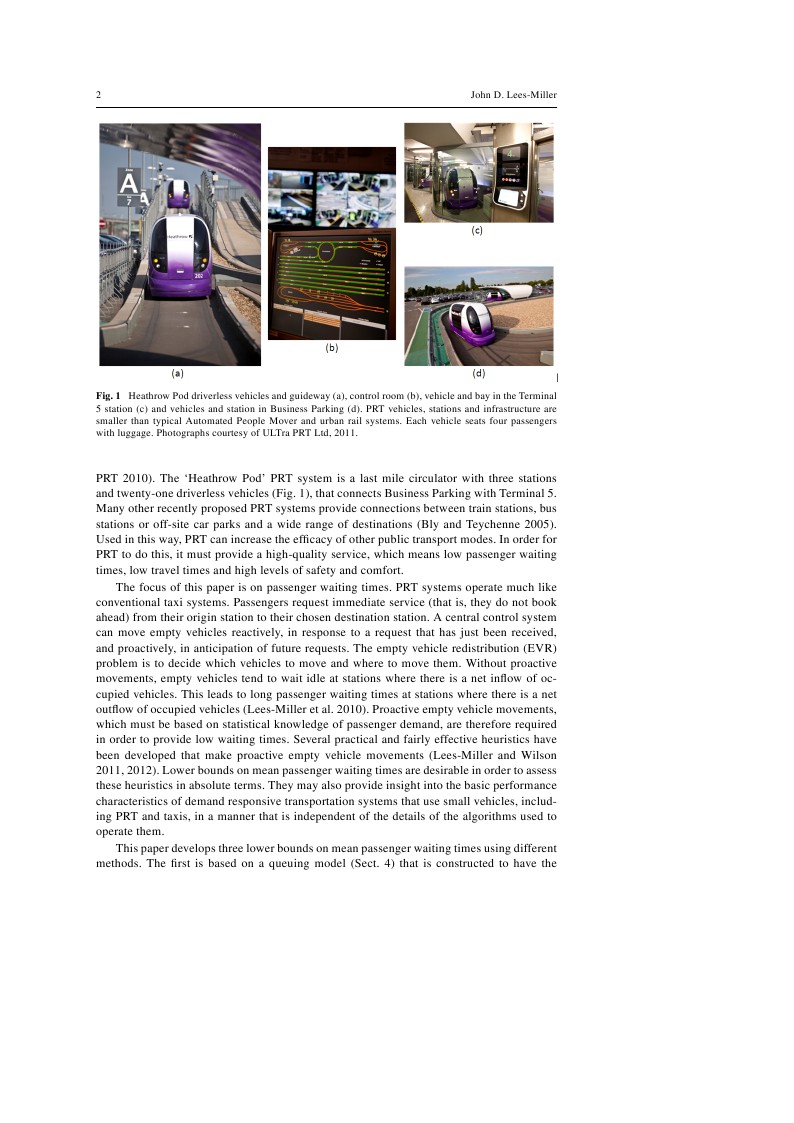
Minimizing Average Passenger Waiting Time in Personal Rapid Transit Systems
Author:
John Lees-Miller
Last Updated:
há 12 anos
License:
Other (as stated in the work)
Abstract:
Personal Rapid Transit (PRT) is an emerging urban transport mode. A PRT system operates much like a conventional hackney taxi system, except that the vehicles are driven by computer (no human driver) between stations in a dedicated network of guideways. The world's first two PRT systems began operating in 2010 and 2011. In both PRT and taxi systems, passengers request immediate service; they do not book ahead. Perfect information about future requests is therefore not available, but statistical information about future requests is available from historical data. If the system does not use this statistical information to position empty vehicles in anticipation of future requests, long passenger waiting times result, which makes the system less attractive to passengers, but using it gives rise to a difficult stochastic optimisation problem. This paper develops three lower bounds on achievable mean passenger waiting time, one based on queuing theory, one based on the static problem, in which it is assumed that perfect information is available, and one based on a Markov Decision Process model. An evaluation of these lower bounds, together with a practical heuristic developed previously, in simulation shows that these lower bounds can often be nearly attained, particularly when the fleet size is large. The results also show that low waiting times and high utilisation can be simultaneously obtained when the fleet size is large, which suggests important economies of scale.

\begin
Discover why over 20 million people worldwide trust Overleaf with their work.